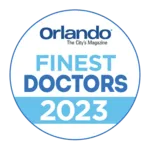Pediatric Tracheotomy: Giving Children the Breath of Life

Pediatric Tracheotomy: Giving Children the Breath of Life
- posted: Oct. 19, 2023
Now more than ever, Orlando-area children with chronic medical conditions are able to live a richer, fuller life and be treated with minimal discomfort thanks to the advances made in tracheotomy care and support. As a parent, a tracheotomy can be a frightening proposition for you and your young child. But thanks to the pediatric otolaryngologists at The Ear, Nose, Throat and Plastic Surgery Associates, you can rest assured their child is in expert, caring hands.
What is a Pediatric Tracheotomy?
Tracheotomies are done in order to allow the body better access to oxygen in a steady manner without inhaling through the mouth or nose.
The terms tracheotomy and tracheostomy are often interchanged. A tracheotomy is the surgery that patients undergo in order to insert a tube in the windpipe that enhances breathing. A tracheostomy is the hole that is surgically made in the windpipe from the outside of the neck.
A tracheotomy is usually needed when the patient needs to bypass, clean or remove obstructions or secretions from the airway, according to John Hopkins Hospital. Other reasons for this procedure include severe sleep apnea, birth defects in the trachea or the larynx and injury to respiratory tract due to inhaling foreign substances.
While some tracheotomies are intended for long-term or permanent use, there are others that are intended to help for a short-term period.
What Happens Pre- and Post-Surgery?
“Children have a higher chance of undergoing a tracheotomy for long-term benefits or permanently rather than for a short-term use,” says Dr. Izak Kielimovitch, a fellowship trained pediatric otolaryngologist at The Ear, Nose, Throat and Plastic Surgery Associates. “To confirm that the opening heals properly and supervise breathing, children will need to stay overnight for a few days before being released.”
Seven days after the surgery, the tubes should be changed and properly dressed before the child is released. A chest X-ray is also performed both before and after the surgery to confirm the position of the tube and to see if any complications have occurred prior to release. According to a study submitted to the U.S. National Library of Medicine and Institutes for Health, children will have lengthier hospital stays after a tracheostomy has been performed.
Initially, constant supervision is necessary in order to prevent water and other foreign objects from getting inside the tube. If the child is unable to communicate, parents will need to monitor their child’s facial expressions and movements in order to observe when maintenance is needed.
While tracheotomies tended to give the impression of mortality, technology has greatly improved the safety and quality of tracheostomies. According to the Surgery Encyclopedia, the overall risk of death from a tracheotomy is less than five percent.
”During the child’s stay, parents and family members will be taught how to properly maintain the tracheotomy tube,” Kielimovitch says. “If the child needs support to aid with breathing, all the equipment will be provided and parents will be taught how to care for their child at home while the child has the tracheotomy tube.”
Parents should talk to their doctor or health care provider if they have questions about the procedure or if complications occur.
Tracheotomy Results
After surgery, parents will need to help their child adjust to new habits for speaking, eating and breathing.
Depending on the size of the tube, speaking may be difficult after a tracheotomy. Since the air flow may not get to the vocal chords as easily, some patients may only be able to say a few words and the voice may sound hoarse or unusual. While some may be able to speak with the tube in place, there are devices that redirect airflow to the vocal chords that allows for speech, according to the Mayo Clinic.
According to John Hopkins Hospital, a tracheotomy should not affect eating or swallowing. However, there may need to be an adjustment in the child’s swallowing patterns. This adjustment is usually mastered in a short period of time.
If a swallowing problem does occur, an otolaryngologist or a speech pathologist can evaluate the problem and offer solutions. Swallowing problems are usually indicated by vomiting, excessive drooling, choking while eating or drinking, congested lung sounds and evidence of food in tracheostomy secretions among others.
Since air will not be inhaled through the mouth or nose, patients may notice that the air they breathe is drier than usual, Kielmovitch says. This can cause some irritation, coughing or excess mucus from the tracheostomy. To help with this, parents can purchase a heat and moisture exchanger to humidify the air, making breathing easier. Another useful tool for children to use is a humidivent. This disposable attachment to the opening humidifies the air inhaled and captures moisture from the air exhaled.
For more information about the best options for your child, ask your otolaryngologist. To schedule an appointment with Dr. Kielmovitch, please call 407.644.4883.
Originally Published in Insight East Orlando.

Pediatric Tracheotomy: Giving Children the Breath of Life
- posted: Oct. 19, 2023
Now more than ever, Orlando-area children with chronic medical conditions are able to live a richer, fuller life and be treated with minimal discomfort thanks to the advances made in tracheotomy care and support. As a parent, a tracheotomy can be a frightening proposition for you and your young child. But thanks to the pediatric otolaryngologists at The Ear, Nose, Throat and Plastic Surgery Associates, you can rest assured their child is in expert, caring hands.
What is a Pediatric Tracheotomy?
Tracheotomies are done in order to allow the body better access to oxygen in a steady manner without inhaling through the mouth or nose.
The terms tracheotomy and tracheostomy are often interchanged. A tracheotomy is the surgery that patients undergo in order to insert a tube in the windpipe that enhances breathing. A tracheostomy is the hole that is surgically made in the windpipe from the outside of the neck.
A tracheotomy is usually needed when the patient needs to bypass, clean or remove obstructions or secretions from the airway, according to John Hopkins Hospital. Other reasons for this procedure include severe sleep apnea, birth defects in the trachea or the larynx and injury to respiratory tract due to inhaling foreign substances.
While some tracheotomies are intended for long-term or permanent use, there are others that are intended to help for a short-term period.
What Happens Pre- and Post-Surgery?
“Children have a higher chance of undergoing a tracheotomy for long-term benefits or permanently rather than for a short-term use,” says Dr. Izak Kielimovitch, a fellowship trained pediatric otolaryngologist at The Ear, Nose, Throat and Plastic Surgery Associates. “To confirm that the opening heals properly and supervise breathing, children will need to stay overnight for a few days before being released.”
Seven days after the surgery, the tubes should be changed and properly dressed before the child is released. A chest X-ray is also performed both before and after the surgery to confirm the position of the tube and to see if any complications have occurred prior to release. According to a study submitted to the U.S. National Library of Medicine and Institutes for Health, children will have lengthier hospital stays after a tracheostomy has been performed.
Initially, constant supervision is necessary in order to prevent water and other foreign objects from getting inside the tube. If the child is unable to communicate, parents will need to monitor their child’s facial expressions and movements in order to observe when maintenance is needed.
While tracheotomies tended to give the impression of mortality, technology has greatly improved the safety and quality of tracheostomies. According to the Surgery Encyclopedia, the overall risk of death from a tracheotomy is less than five percent.
”During the child’s stay, parents and family members will be taught how to properly maintain the tracheotomy tube,” Kielimovitch says. “If the child needs support to aid with breathing, all the equipment will be provided and parents will be taught how to care for their child at home while the child has the tracheotomy tube.”
Parents should talk to their doctor or health care provider if they have questions about the procedure or if complications occur.
Tracheotomy Results
After surgery, parents will need to help their child adjust to new habits for speaking, eating and breathing.
Depending on the size of the tube, speaking may be difficult after a tracheotomy. Since the air flow may not get to the vocal chords as easily, some patients may only be able to say a few words and the voice may sound hoarse or unusual. While some may be able to speak with the tube in place, there are devices that redirect airflow to the vocal chords that allows for speech, according to the Mayo Clinic.
According to John Hopkins Hospital, a tracheotomy should not affect eating or swallowing. However, there may need to be an adjustment in the child’s swallowing patterns. This adjustment is usually mastered in a short period of time.
If a swallowing problem does occur, an otolaryngologist or a speech pathologist can evaluate the problem and offer solutions. Swallowing problems are usually indicated by vomiting, excessive drooling, choking while eating or drinking, congested lung sounds and evidence of food in tracheostomy secretions among others.
Since air will not be inhaled through the mouth or nose, patients may notice that the air they breathe is drier than usual, Kielmovitch says. This can cause some irritation, coughing or excess mucus from the tracheostomy. To help with this, parents can purchase a heat and moisture exchanger to humidify the air, making breathing easier. Another useful tool for children to use is a humidivent. This disposable attachment to the opening humidifies the air inhaled and captures moisture from the air exhaled.
For more information about the best options for your child, ask your otolaryngologist. To schedule an appointment with Dr. Kielmovitch, please call 407.644.4883.
Originally Published in Insight East Orlando.
Ear, Nose, Throat and Plastic Surgery Associates, PA
Winter Park
133 Benmore Drive, Suite 100,
Winter Park, FL 32792
Altamonte Springs
107 The Hermits Trail,
Altamonte Springs, FL 32701
Celebration
400 Celebration Place, Suite A120,
Celebration, FL 34747
Contact Us
Office Hours
Monday
8:00 am - 5:00 pm
Tuesday
8:00 am - 5:00 pm
Wednesday
8:00 am - 5:00 pm
Thursday
8:00 am - 5:00 pm
Friday
8:00 am - 5:00 pm
Saturday
8:00 am - 12:00 pm
Sunday
Closed

